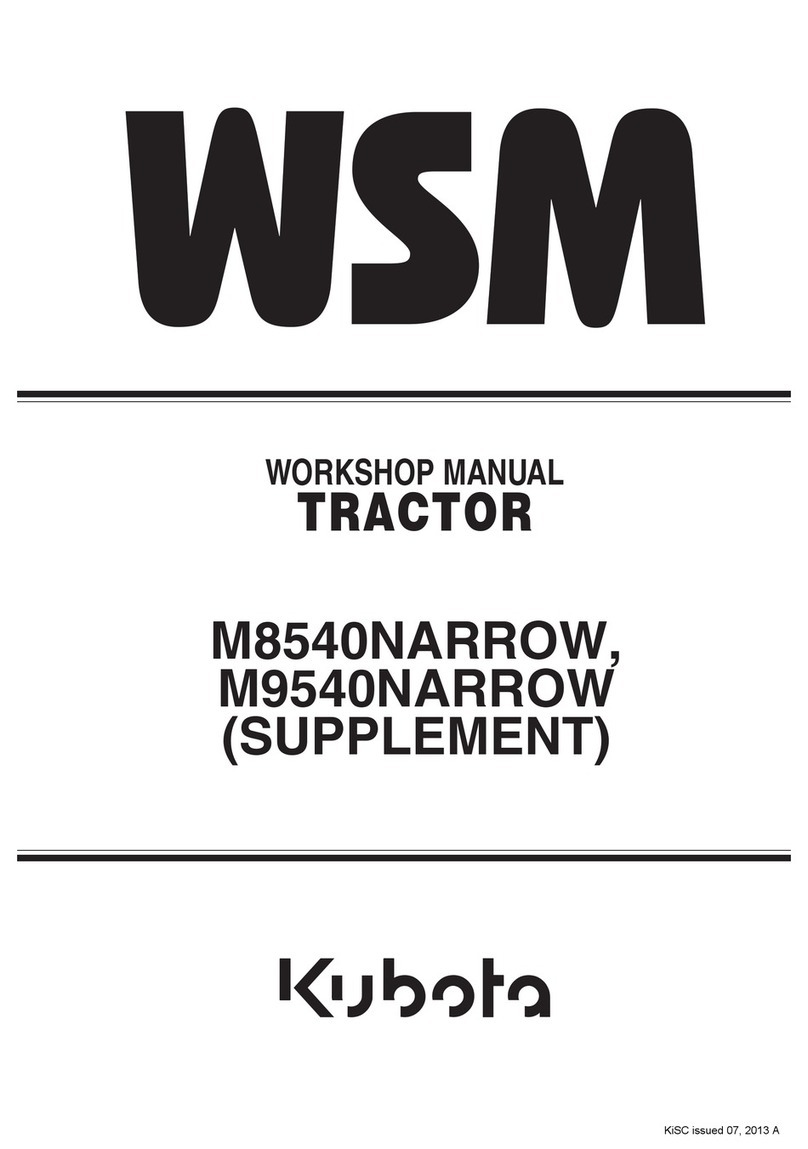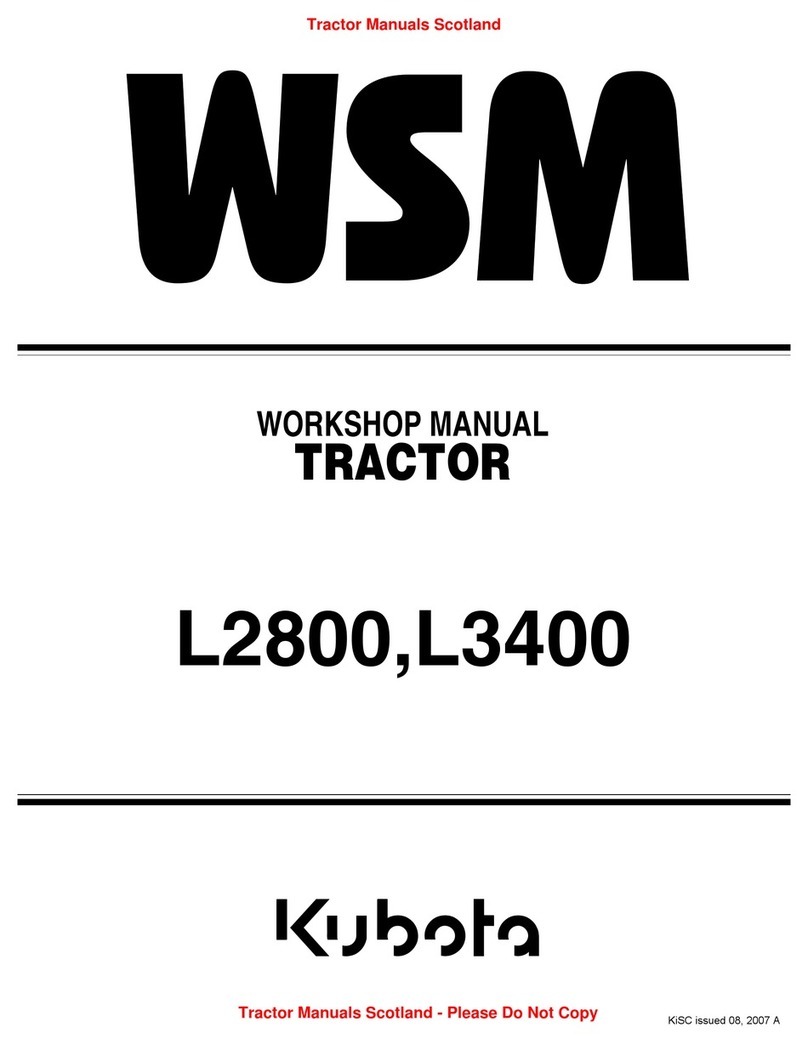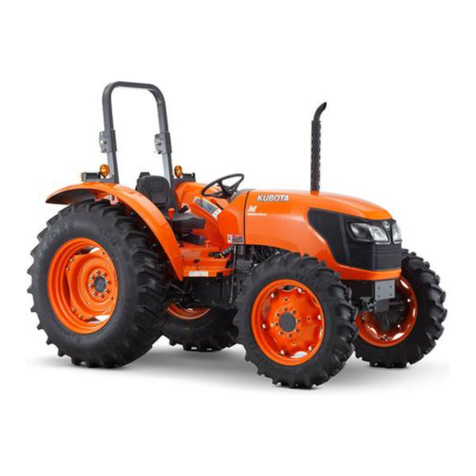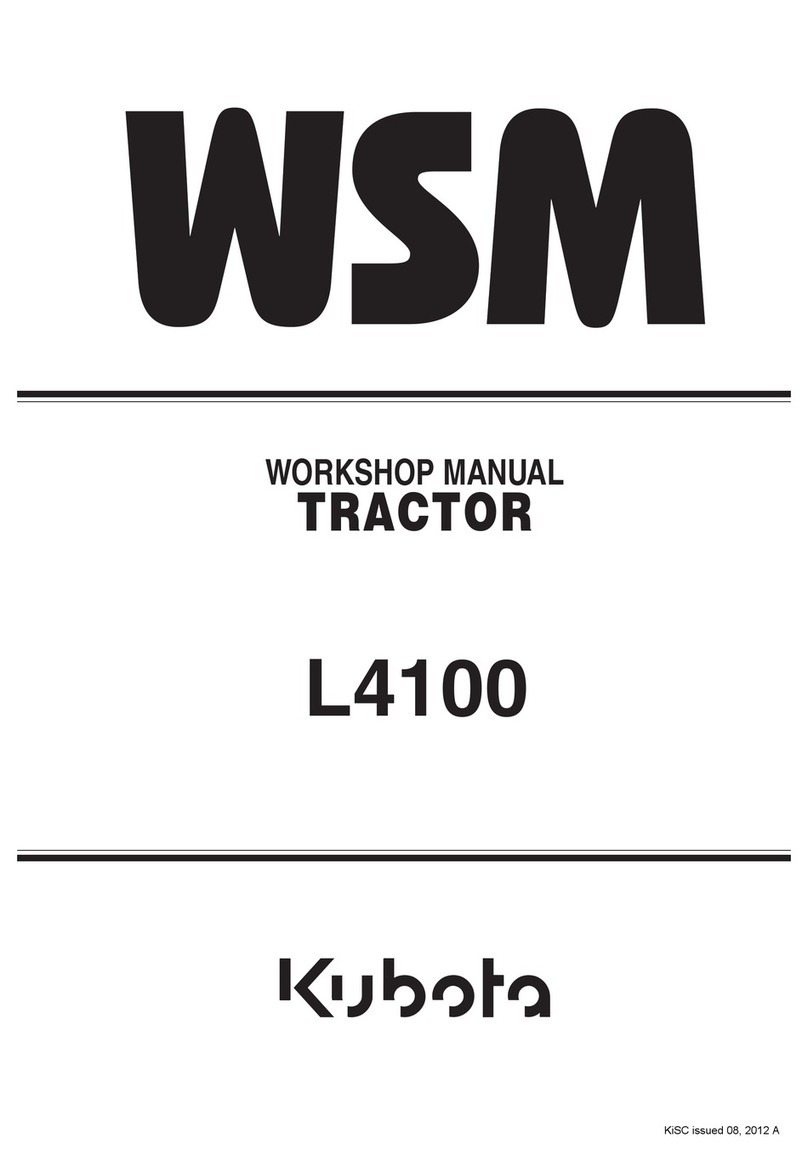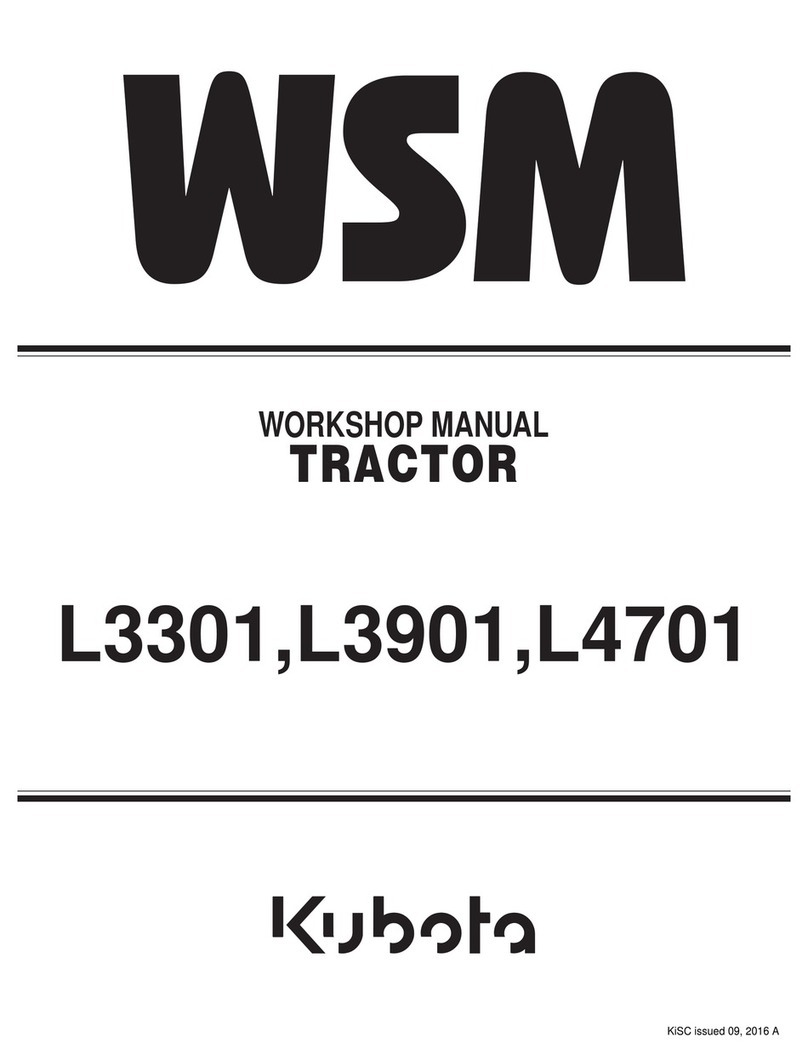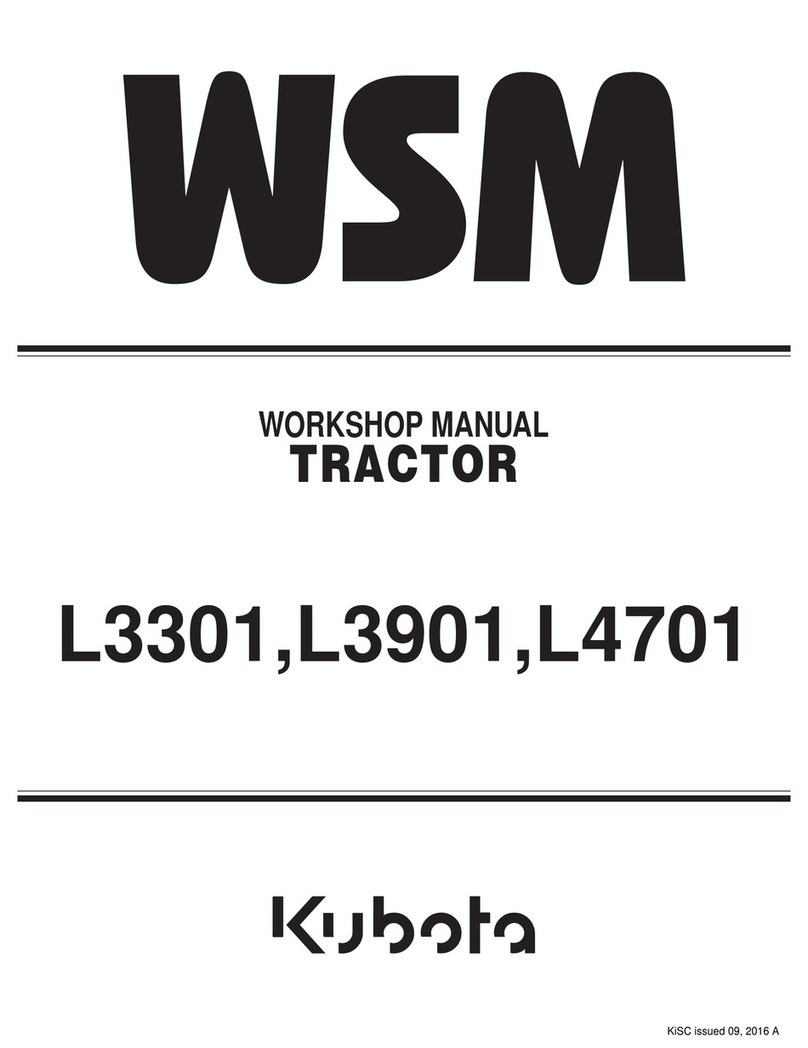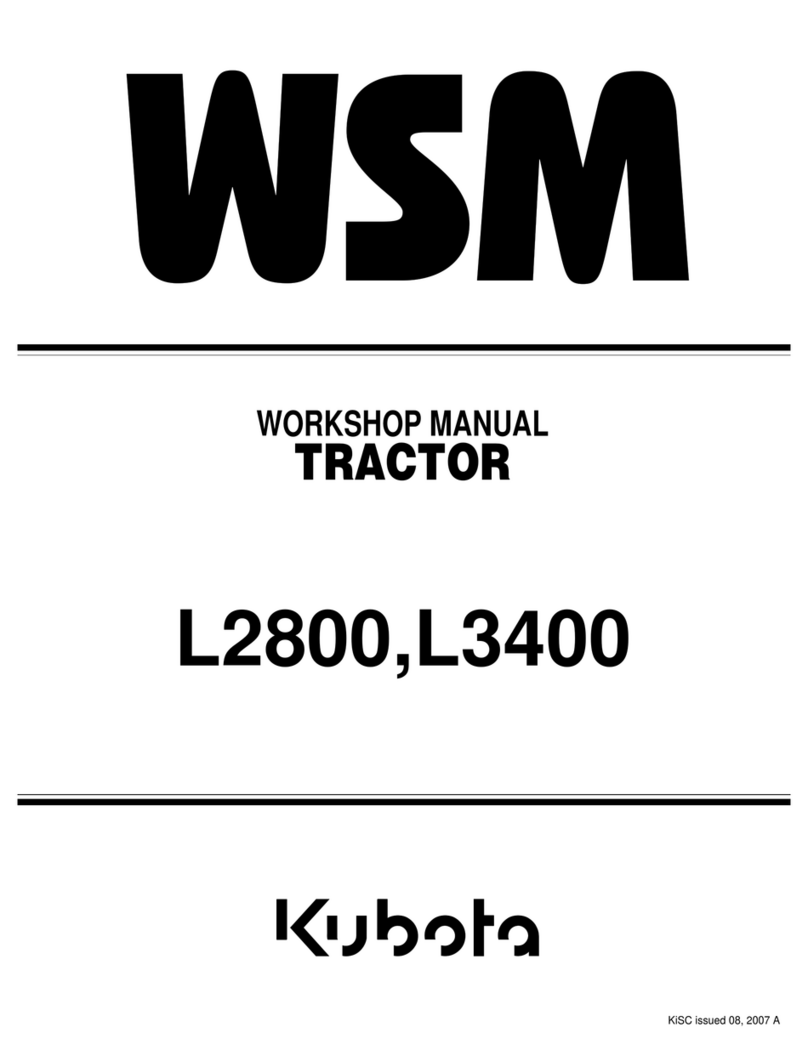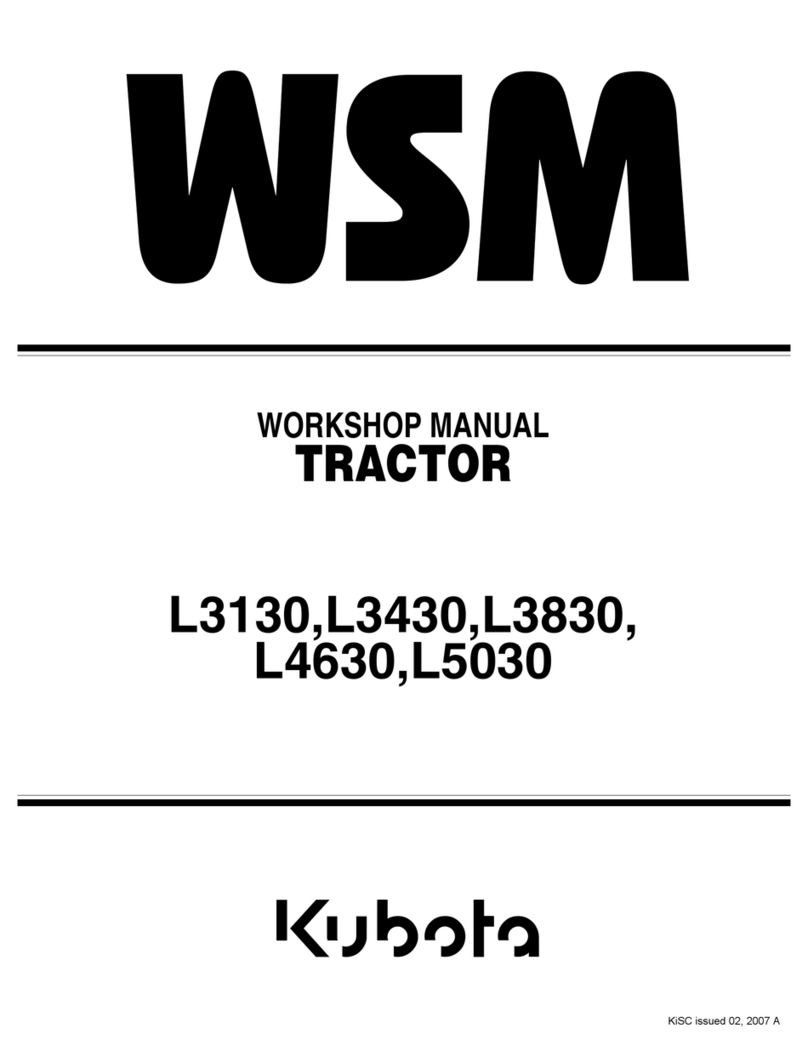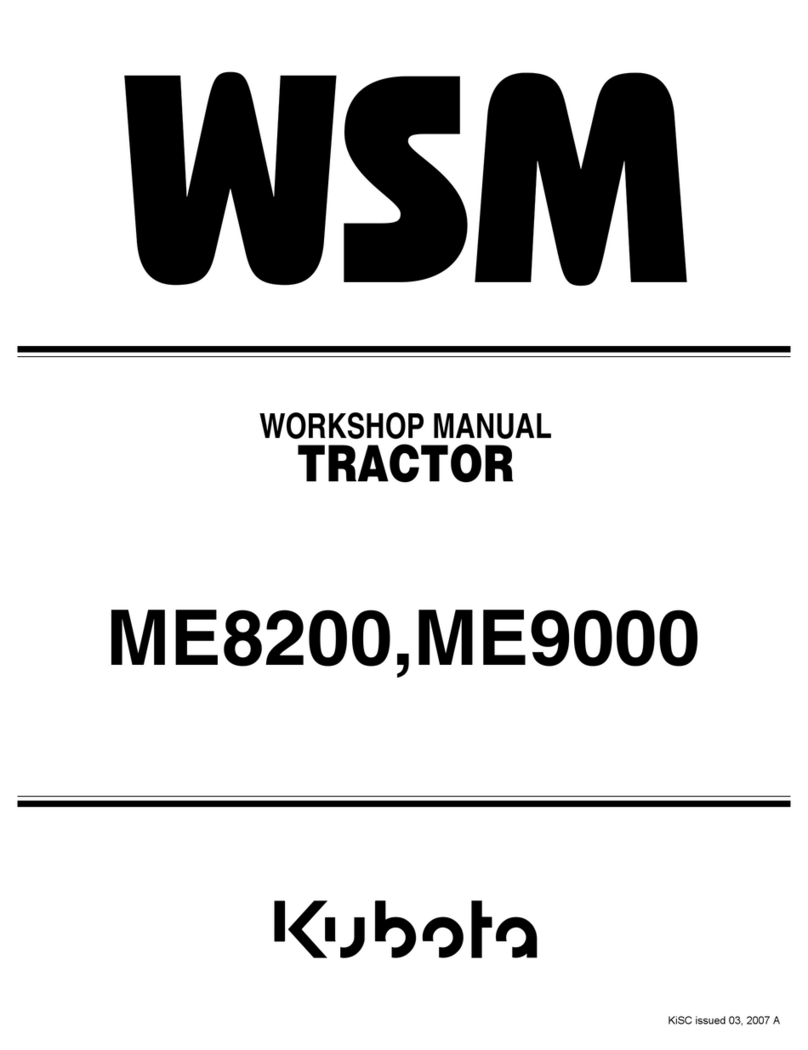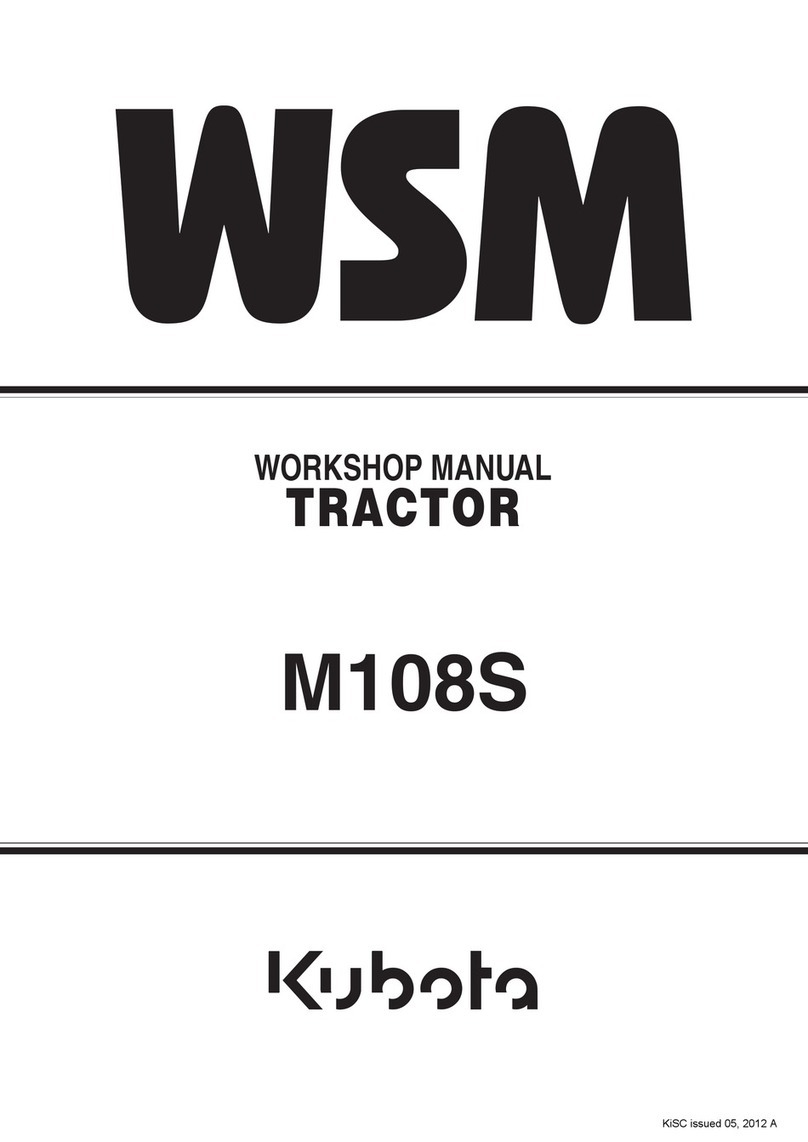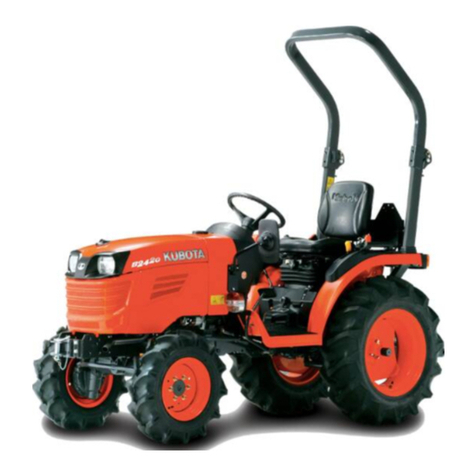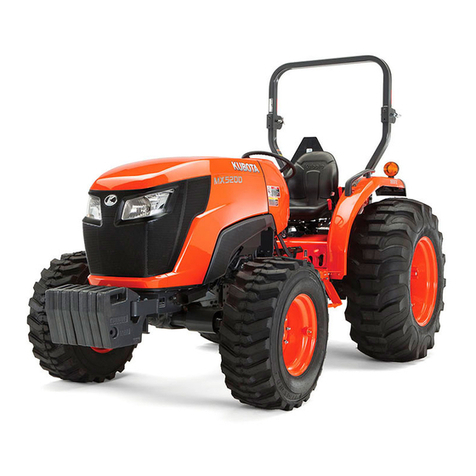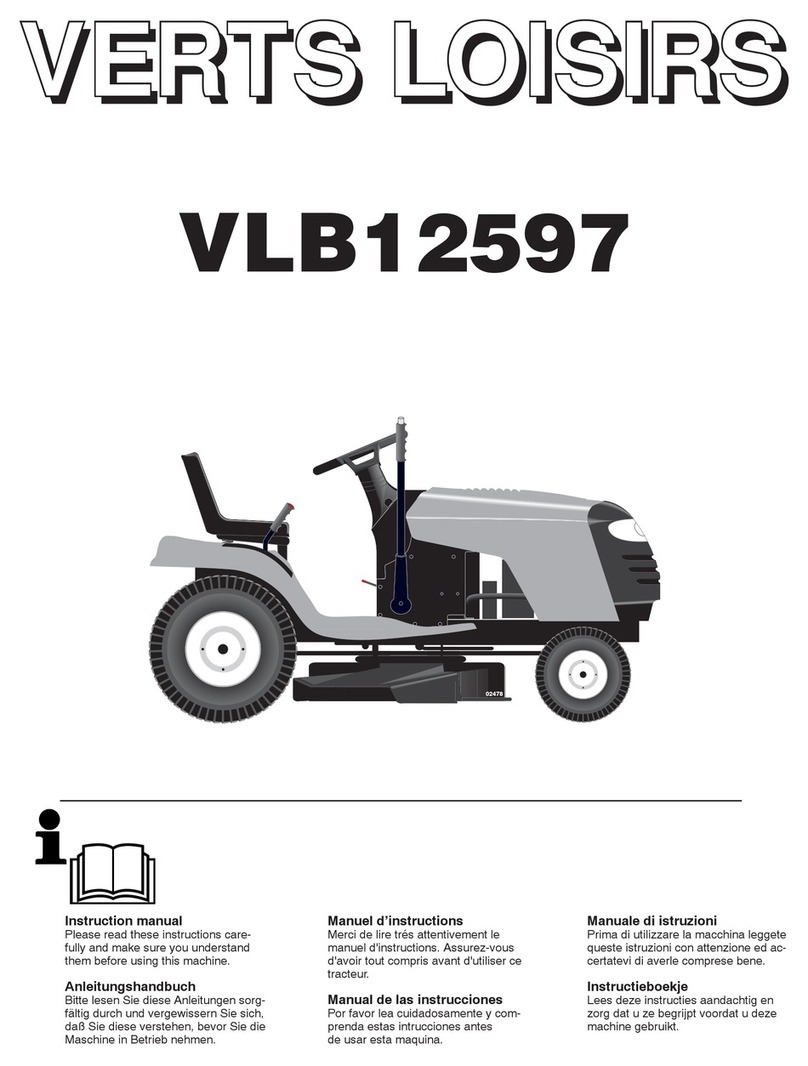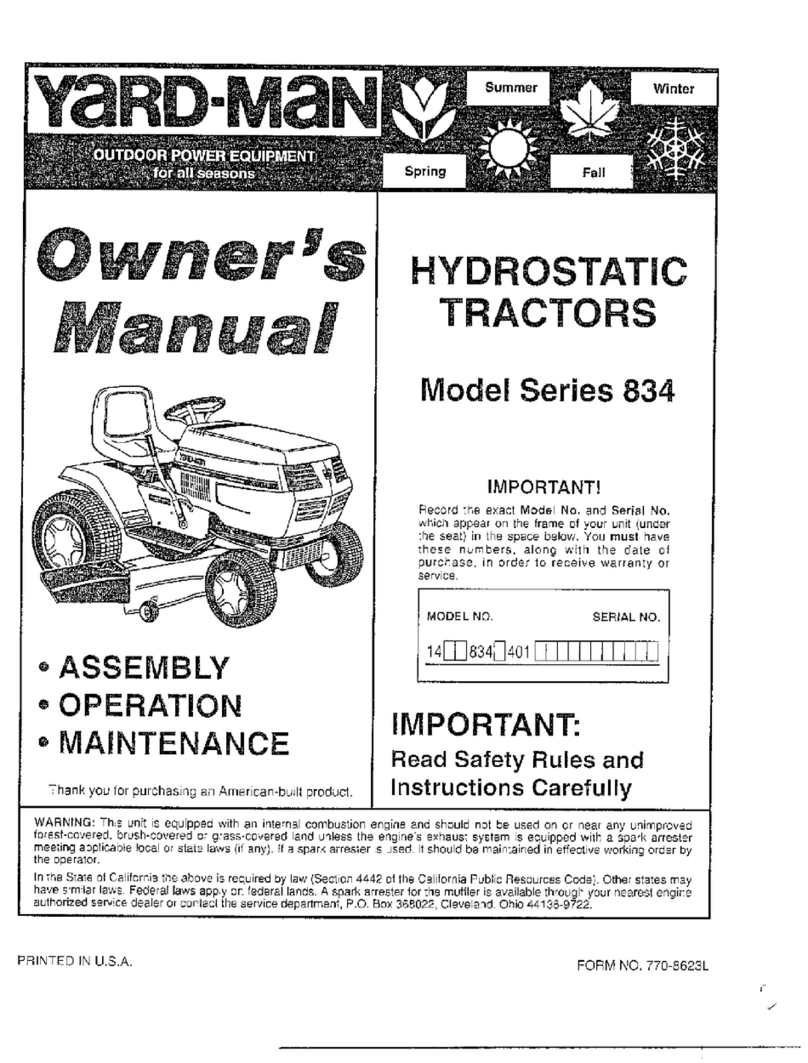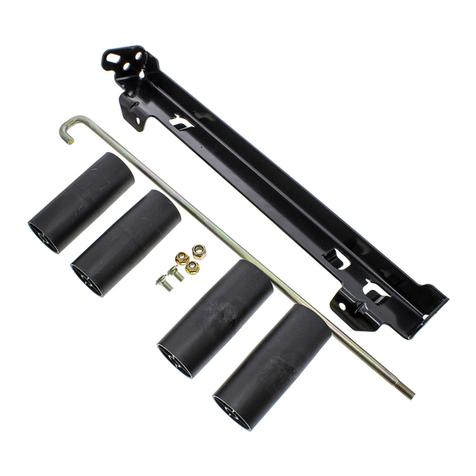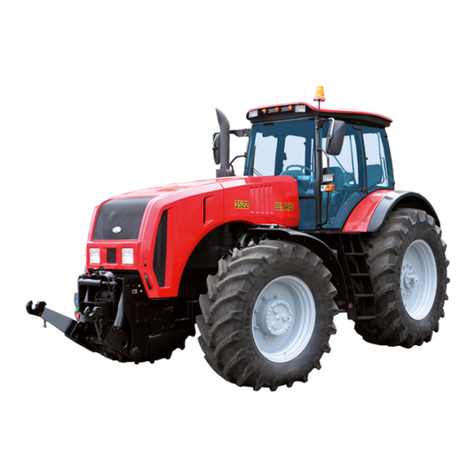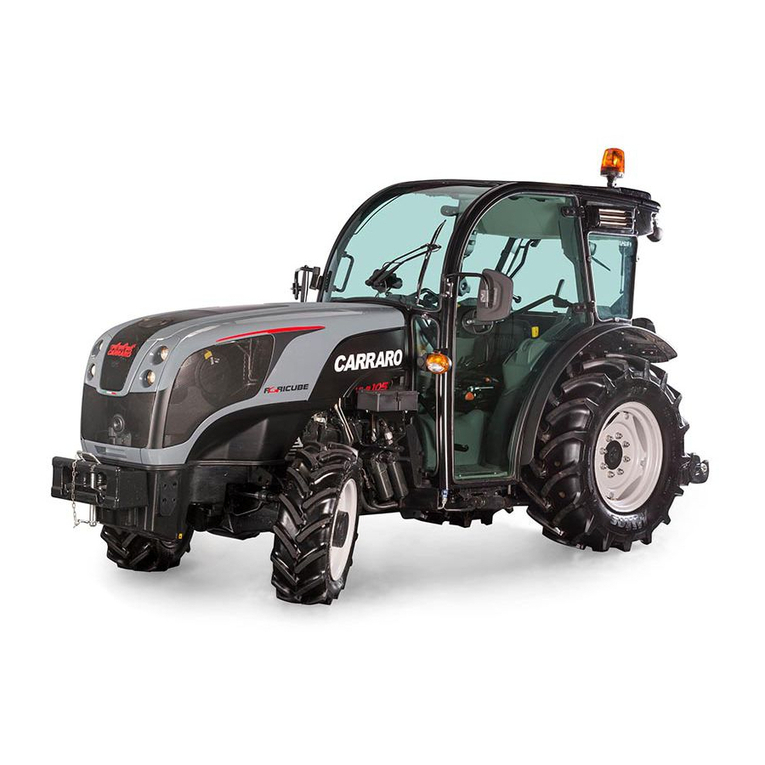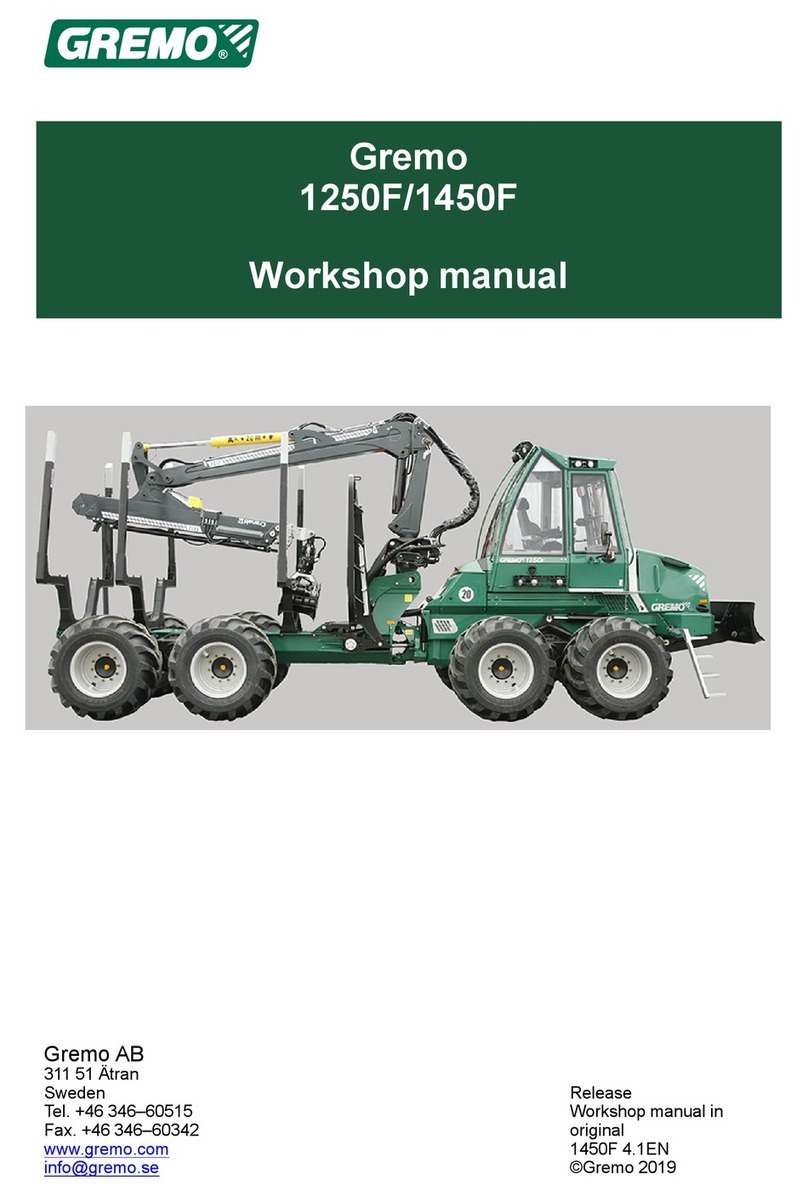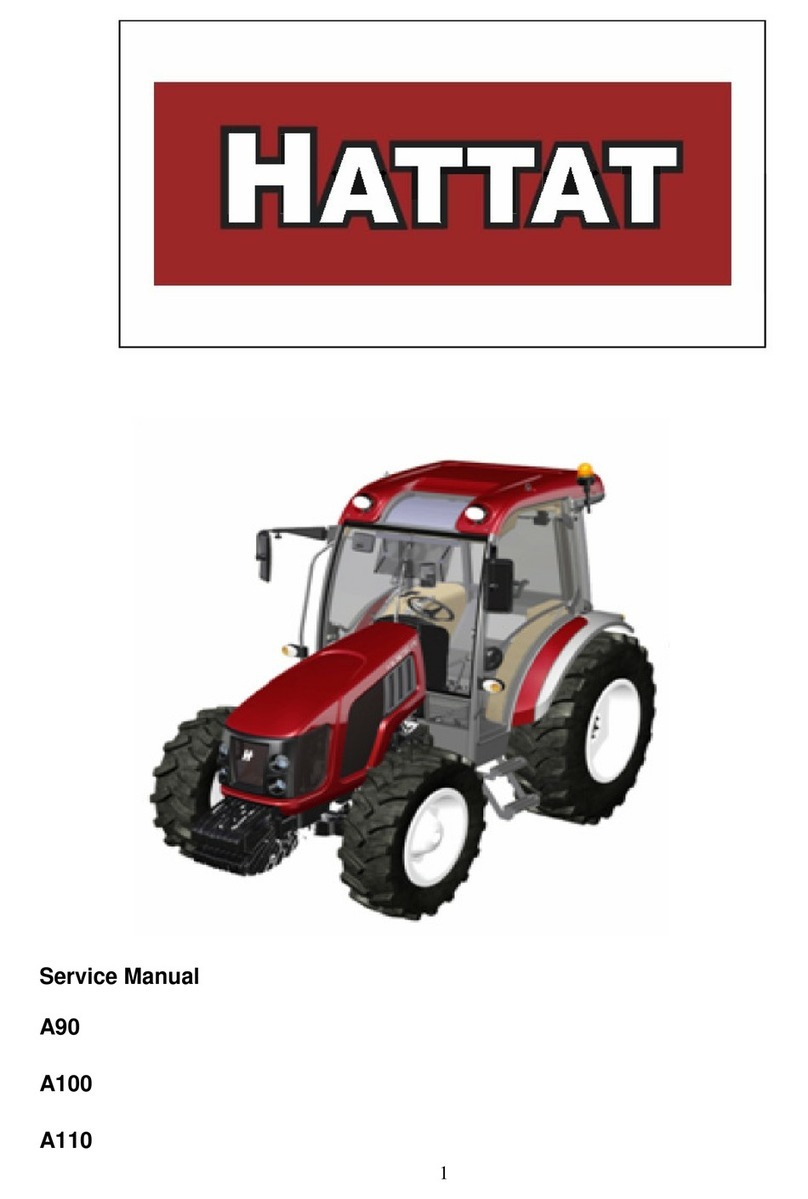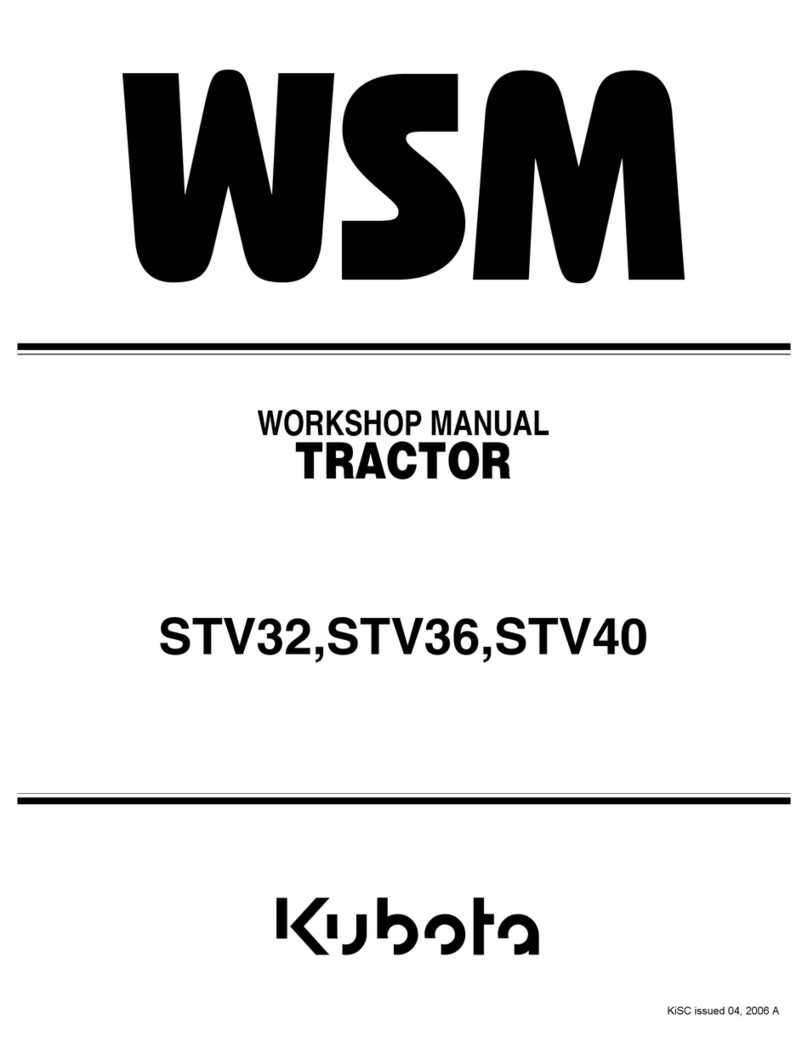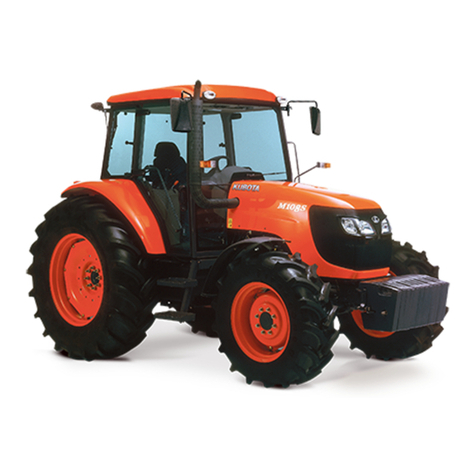
L8
M9540Low Profile, WSM SPECIFICATIONS
SPECIFICATIONS
Note : *1 : Manufacture’s estimate
*2 : At lower link end with links horizontal.
The company reserves the right to change the specifications without notice.
W10281170
Model M9540Low Profile
4WD
Engine
Model V3800DI-TE3
Type Vertical, water-cooled, 4-cycle direct injection diesel engine
Number of cylinders 4
Total displacement 3769 cm3(230.0 cu.in.)
Bore and stroke 100 ×120 mm (3.9 ×4.7 in.)
Rated speed 2600 min−1(rpm)
Net power*1 70.8 kW (95.0 HP)
Gross power*1 73.6 kW (98.7 HP)
Maximum torque 314 N·m (32.0 kgf·m, 232 lbf·ft) / 1500 to 1700 min−1(rpm)
Battery capacity 12 V, RC : 160 min, CCA : 900 A
Fuel Diesel fuel No. 1 [below −10 °C (14 °F], Diesel fuel No. 2-D [above −10 °C (14 °F)]
Fuel tank capacity 90 L (23.8 U.S.gals., 19.8 Imp.gals.)
Engine oil capacity 10.7 L (11.3 U.S.qts., 9.4 Imp.qts.)
Coolant capacity 9.0 L (9.5 U.S.qts., 7.9 Imp.qts.)
Dimensions
Overall length 3955 mm (155.7 in.)
Overall width (min. tread) 1985 mm (78.15 in.)
Overall
height
ROPS raised 2450 mm (96.46 in.)
ROPS
retracted 1845 mm (72.64 in.)
Wheel base 2250 mm (88.6 in.)
Tread Front 1574, 1634 mm (61.97, 64.33 in.)
Rear 1515 to 1915 mm (59.65 to 75.39 in.)
Minimum ground clearance 390 mm (15.4 in.) (Drawbar bracket)
Weight Standard tire with steel disc 2900 kg (6393 lbs)
Traveling
system
Standard
tire size
Front 360/70R20
Rear 480/70R28
Clutch Multiple wet discs
Steering Hydraulic power steering
Braking system Hydraulic wet discs
Differential Bevel gears with differential lock (Rear)
Hydraulic
system
Hydraulic control system Position, draft (top link sensing) and mix control
Pump capacity 64.3 L (17 U.S.gals., 14 Imp.gals.) / min.
3-point hitch SAE Category II
Max. lifting
force
At lift points*2 3900 kg (8598 lbs)
24 in. behind lift
points*2 3300 kg (7275 lbs)
Remote hydraulic control Two remote valve (Max Three)
System pressure 19.6 MPa (200 kgf/cm2, 2844.7 psi)
Traction system Swinging drawbar, adjustable in direction
PTO
Live PTO
(Indipen-
dent)
Direction of
turning Clockwise, viewed from tractor rear
PTO speed 6 spline : 540 min−1(rpm) / 2035 min−1(rpm) engine speed
6 spline : 540E min−1(rpm) / 1519 min−1(rpm) engine speed
